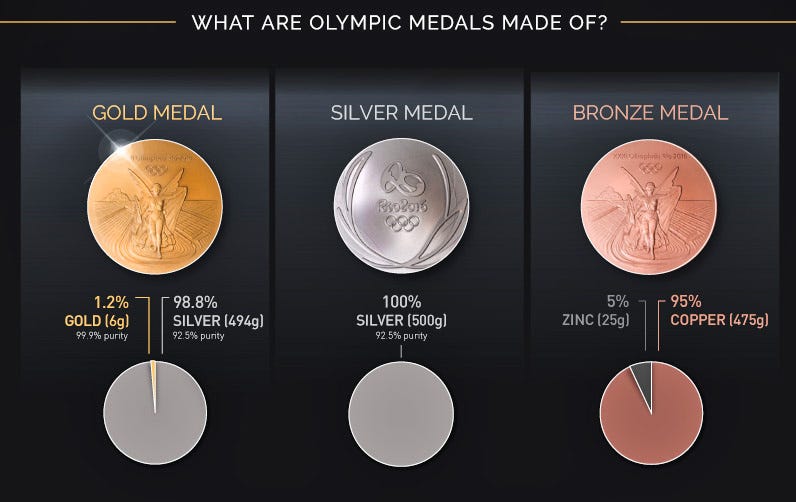If the Olympic gold medals are no longer made from real solid gold, what are they out of?
Despite their illustrious sheen and symbol of athletic excellence, Olympic gold medals have not been made from solid gold for over a century. Instead, these coveted awards are primarily composed of silver.
The tradition of using silver as the base material began in 1912, when the last solid gold medals were awarded at the Stockholm Olympics. Modern gold medals are sterling silver coated with a thin layer of pure gold, giving them their characteristic glittering appearance.
The composition of Olympic gold medals is regulated by the International Olympic Committee (IOC), which stipulates that each gold medal must contain at least six grams of gold plating over the silver. The exact specifications can vary slightly depending on the host country and the design elements incorporated into the medal. However, the core material remains consistent, ensuring a standard of quality and prestige across different Games.
The primary reason for this change from solid gold to a silver core with gold plating is cost. Gold is an expensive material, and as the scale and participation in the Olympics have grown, producing solid gold medals would be prohibitively expensive. By using silver as the primary material, the IOC can still create medals that look and feel prestigious without incurring the massive costs associated with solid gold.
Aside from the economic aspect, the shift to using silver has practical advantages. Silver is more durable and less prone to damage compared to gold, which is a relatively soft metal. This means that the medals are more resistant to scratches and dents, allowing athletes to cherish their keepsakes for a lifetime without worrying about the medals losing their luster or shape.
Keep reading with a 7-day free trial
Subscribe to The BURNER * to keep reading this post and get 7 days of free access to the full post archives.





